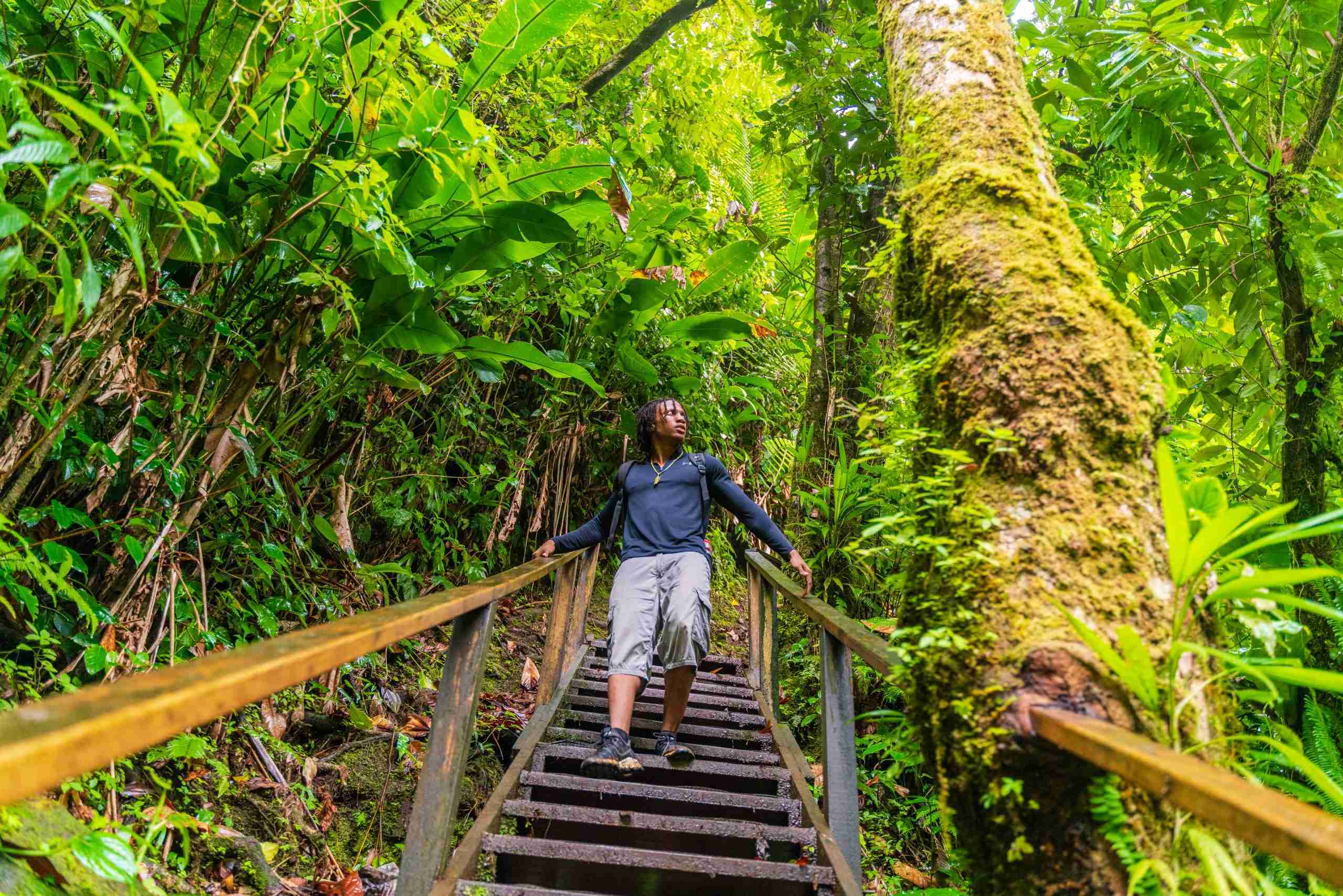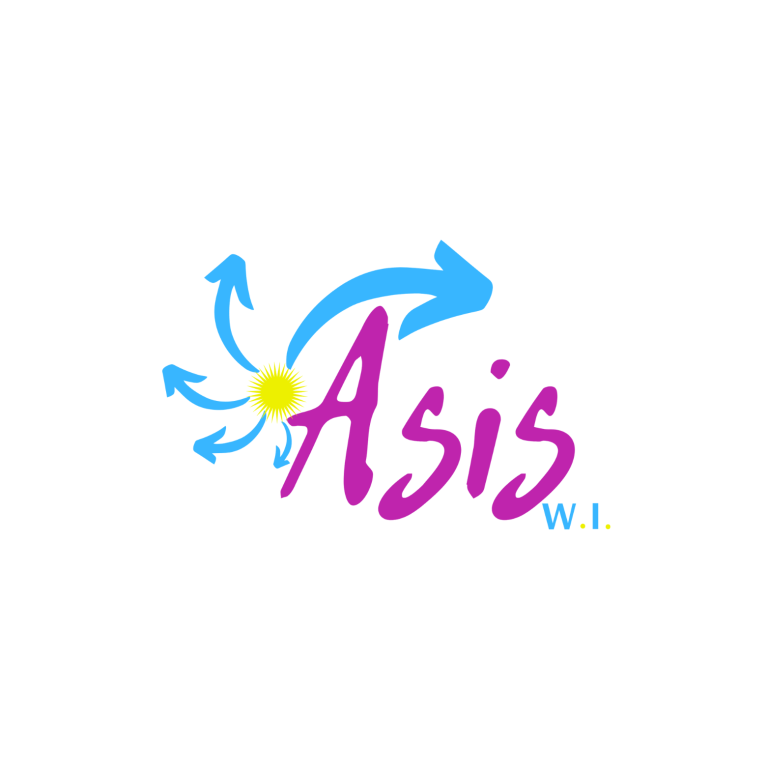DOMINICA
The Nature Island
Welcome to Dominica, a verdant gem nestled in the heart of the Caribbean. It’s a place where the rhythm of nature syncs with the heartbeat of its people, creating an island symphony of unforgettable experiences.
Not to be mistaken for the Dominican Republic, this island nestled between Guadeloupe and Martinique is a sanctuary for those seeking to immerse themselves in unbridled natural beauty and rich cultural heritage. Often referred to as the “Nature Island“, Dominica offers a unique array of immersive outdoor experiences set against a backdrop of lush landscapes and pristine waters.
Dominica, pronounced Dom-in-EEK-a, lies in the Eastern Caribbean. It’s an island where nature reigns supreme, encapsulating the heart and soul of the Caribbean’s raw, untouched beauty. The capital, Roseau, embodies the island’s spirit, a gateway to the myriad of natural wonders and the vibrant pulse of its people and culture.

Geographic and Geological Overview
A Geographic Snapshot

Size: 293 square miles; 29 miles long and 16 miles wide.
Capital: Roseau on the west side of the island.
High Point: Morne Diablotins at 1,447 meters (4,747 feet).
Population: About 73,276
Language: English, Dominican Creole
Vegetation: Known for its lush and varied plant life, supported by up to 300 inches of annual rainfall.
Water Bodies: Home to 365 rivers and an abundance of unique species, with over 1,000 types of flowering plants.
Agriculture: The fertile volcanic soil and mineral-rich waters enhance sustainable farming and local cuisine.

Geological Features
Geology: Contains nine active volcanoes, influencing the island’s geothermal features like Boiling Lake, with water temperatures exceeding 200 degrees Fahrenheit (the second-largest hot spring in the world ).
Natural Wonders: Hosts the Morne Trois Pitons National Park, a UNESCO World Heritage Site and steaming fumaroles.
Cultural Tapestry
Kalinago
Dominica is a melting pot of cultures, with a population that respects and reveres its ancestral roots, including those of the Kalinago – the island’s indigenous people.
The Kalinago, originally known as the Caribs, are believed to have originally come from South America and represent the last remaining tribe of the pre-Columbian Carib Indians going back to about 3000 B.C.
After the arrival of Christopher Columbus and European settlers, the Kalinago fled to the isolated eastern side of Dominica, taking with them rites, rituals, and a way of living reaching back to the island’s original settlers.
The British gained full control of the island in 1763, with the Kalinago being given 232 acres of land.
Their territory was expanded to 3,700 acres in 1903 and the island won its independence in 1978.
Their rich language and deep connection to nature can be heard in their name for their island, “Waitukubuli,” meaning “tall is her body.”
This territory is unique in the Caribbean.
Dominica’s Creative Heart
Explore the essence of Dominica through its Crafts and Creations, where tradition meets creativity. Witness the skillful artistry in basket weaving, vibrant textiles and unique woodwork, all telling the island’s story.
Local markets and workshops showcase the craftsmanship, offering insights into the cultural heritage and natural inspirations.
Witness this modern interpretation of tradition with designers like Vee’Couture, who infuses local culture into her stunning creations.


Local Cuisine
Dominica’s Cuisine Highlight
Delve into the heart of Dominica’s culinary landscape, where the flavors tells the story of the island’s heritage and natural bounty.
At the forefront is Callaloo, a beloved traditional dish that exemplifies the fusion of indigenous and Creole influences. Crafted from the lush, green leaves of the dasheen plant, simmered in creamy coconut milk, and seasoned with local herbs and spices. This stew, often featuring crab, chicken, or salted meat, embodies the community’s connection to the land and sea.


While the unique Mountain Chicken has become a rarer delicacy, the beloved Green Fig and Saltfish remains a staple, reflecting the island’s diverse flavors. Ingredients like fresh fruits, vegetables, and seafood are central to Dominican.
Economy and Infrastructure
Building a Sustainable Future
Dominica’s economy is primarily driven by agriculture, tourism, and light manufacturing. The island is known for its production of bananas, citrus fruits, and coconuts, which are major exports. Over recent years, the government has been promoting Dominica as an eco-tourism destination, capitalizing on its natural beauty and commitment to environmental sustainability. This has led to the growth of small-scale, environmentally conscious businesses that cater to adventure tourists interested in exploring the island’s rainforests, hot springs, and underwater scenery.
Infrastructure development has been a key focus, with improvements in road networks and telecommunications. The country has invested in renewable energy sources to reduce dependence on imported fossil fuels, utilizing its volcanic activity to develop geothermal energy. Additionally, the modernization of the Douglas-Charles Airport and improvements in port facilities are aimed to enhance trade and tourism capabilities.
Historical Insights
From Indigenous Roots to Modern Resilience
Dominica’s history is marked by its early indigenous peoples, the Kalinago, who resisted European colonization more fiercely than their neighbors. The island was the last of the Caribbean islands to be colonized by Europeans due to the fierce resistance from the Kalinago. It was contested for centuries by the French and the British before finally becoming a British colony in 1763.
Dominica gained independence from Britain in 1978 and has since been working to overcome the challenges of small island governance. The country’s history is also shaped by its efforts to preserve its cultural heritage, including the Carib language spoken by the Kalinago people. The 20th and 21st centuries have seen Dominica navigate its path towards developing a resilient economy, particularly after being hit hard by tropical storms and hurricanes, which have prompted investments in disaster resilience and sustainable practices.
What Makes Dominica So Unique
- Capital City: The capital of Dominica is Roseau, which is home to nearly a third of the population.
- Biodiversity: Dominica is home to more than 1,000 species of flowering plants, including 74 species of orchids.
- Forests: About 60% of Dominica is covered in forest, including the UNESCO-listed Morne Trois Pitons National Park.
- Hot Springs: Dominica is well-known for its geothermal activity and the Boiling Lake.
- Official Language: English is the official language of Dominica, though a French-based Creole (known as Kwéyòl) is widely spoken.
- Volcanoes: The island has nine active volcanoes, the most of any country in the world relative to its land area.
- Dominica is one of the few places in the world where visitors can swim in a freshwater lake that is fed by a hot spring.
- The island has more rivers per square mile than any other country in the world, with 365 rivers in total.
- Birds: Dominica is home to more than 175 bird species, including its national bird, the endangered Sisserou parrot, which cannot be found anywhere else in the world.
- Kalinago Territory: The island still maintains a Kalinago Territory, home to the descendants of the original inhabitants of the Caribbean islands.
Events
Rhythms of Dominica
Dominica’s rich culture comes from its mix of English, French, African and Carib peoples, which is evident in their music, dance, language, and hospitality.
From the colorful Carnival, known locally as Mas Domnik pulsating with the rhythm of Creole music and traditional ‘bouyon‘ beats, to the World Creole Music Festival, each event is a window into the soul of Dominica.
The island hosts major annual events throughout the year and include:
. Carnival (February/March)
. Hike Fest (May)
. Jazz ‘n Creole Fest (May)
. Dive Fest (July)
. World Creole Music Festival (October)
. Independence Day (November)
The island’s festivals combine music, dance, and traditional costumes to create an unforgettable experience.















































